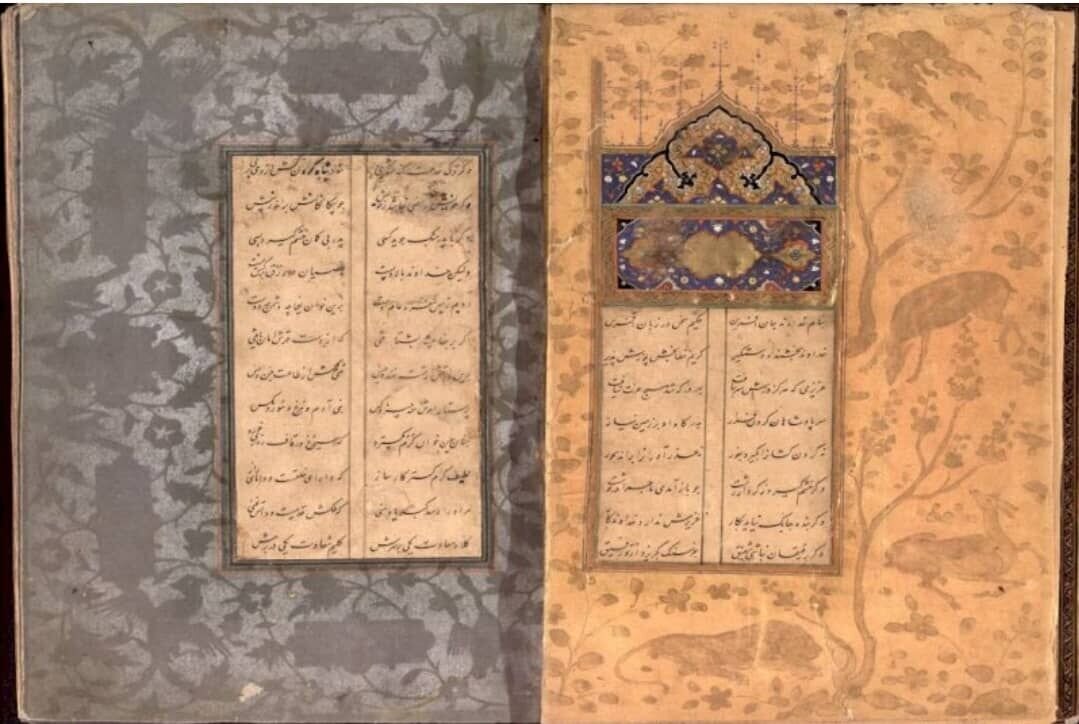Precious Bustan manuscripts on display at Golestan Palace

TEHRAN – A selection of rare manuscripts of the Persian poet Sadi’s masterpiece Bustan (The Orchard) has been put on display in an exhibition at the Golestan Palace in Tehran, the director of the palace has said.
The exhibition displays five exquisite manuscripts, one of which is a 16th-century manuscript written by Mir Ali Soltani, and features five miniatures, Afarin Emami explained on Sunday.
There are also 14 calligraphic paintings of Sadi’s poems on display in this exhibition, she added.
The exhibit will be running until April 29, she noted.
Abu-Muhammad Muslih al-Din bin Abdallah Shirazi, known by his pen name Sadi, was one of the major Persian poets of the medieval period. Sadi is known as a mystic and metaphysician in the history of Persian literature. He is recognized for the quality of his writings and the depth of his social and moral thoughts. The ancient scholar has gained worldwide fame, not only in Persian-speaking countries but in Western societies, with his poems being quoted in a multitude of sources.
Sadi’s best-known masterpieces are Bustan (The Orchard) completed in 1257 and Gulistan (The Flower Garden) in 1258. Bustan, his best-known work, was completed in 1257. It includes 4,000 verses in 183 stories about the virtues such as justice, kindness, love, modesty, liberality, generosity, satisfaction, and happiness, and the ecstatic practices of dervishes addressing all people to have a better and happier life.
A year after the completion of Bustan, Sadi composed his masterpiece Gulistan. Gulistan, comprised of 8 chapters is mainly in prose. The book widely addresses kings’morality, dervishes’ behavior, benefits of contentment, silence and talking in proper time, love and youthfulness, weakness in old age and education. Sadi attempts to advise people to live freely and to improve the quality of their lives in Gulistan. It is one of the most effective books in prose in Persian literature.
Sadi’s other works include Ghazals (love poems or Lyrics; sonnets), qasidas (longer mono-rhyme poems or Odes), quatrains, and short pieces in prose in both Persian and Arabic. He is known as one of the greatest ghazal-writers of Persian poetry besides Hafiz.
A destination for domestic and international travelers, Golestan Palace is located in the heart and historic core of Tehran. The palace complex is one of the oldest in the Iranian capital, originally built during the Safavid dynasty (1501–1736) in the historic walled city.
Following extensions and additions, it received its most characteristic features in the 19th century, when the palace complex was selected as the royal residence and seat of power by the Qajar ruling family (1789-1925). At present, the Golestan Palace complex consists of eight key palace structures mostly used as museums and the eponymous gardens, a green shared center of the complex, surrounded by an outer wall with gates.
As mentioned by UNESCO, the complex exemplifies the architectural and artistic achievements of the Qajar era, including the introduction of European motifs and styles into Persian art.
ABU/AM
